Reluctance for Remote: Why Are Some Companies Choosing Location Over Skill?
authors are vetted experts in their fields and write on topics in which they are extremely knowledgeable. All of our content is peer reviewed and validated by world-class professionals.

- With the US labor market close to full employment, finding and retaining highly skilled talent has become a top concern for organizations.
- A majority of companies (70%), however, still prefer team members to be in the same physical location, according to Toptal’s 2019 State of the Remote Workforce report.
- Today’s digital talent platforms allow companies to rethink the way they distribute activity, and thus work.
- Many countries, including Norway and the UK, are already mandating remote work options for employees, indicating a global shift toward new working models.
- Visit Staffing.com's homepage for more.
As the global population continues to explode, reaching 7.7 billion people in April 2019, major advances in telecommunications (like 5G) are allowing us far greater access to each other. Technology and correlative social shifts are “bringing forth dynamic and innovative new players on the world stage and could give a much-needed boost to productivity and prosperity in many countries,” according to a McKinsey Global Institute report. These advances enable competitive skills to be developed globally, even in places where access to education was previously limited.
The possibilities for the free market to employ this growing talent pool, it seems, are endless. Toptal’s 2019 State of the Remote Workforce Report, however, says that enterprise organizations are still demonstrating a preference for local, physically present talent. According to the report, only 6% of respondents thought location was unimportant to a given job. On the one hand, the desire to retain an on-location team is understandable; companies have operated this way for hundreds of years. In this case, maintaining the status quo isn’t always the best strategy—it could prove fatal for organizations unwilling to adapt.
The Talk: Companies Overwhelmingly Prioritize Skill
Expanding a workforce to include on-demand or full-time remote talent promises to keep companies competitive by allowing them to attract top talent. “Although flexible workspaces have a number of strategic and financial benefits for businesses, this is a people-driven movement . . . 4 out of every 5 respondents stated that, given two similar job offers, they would turn down the one that didn’t offer them flexible working,” according to Mark Dixon, International Workplace Group founder and CEO.
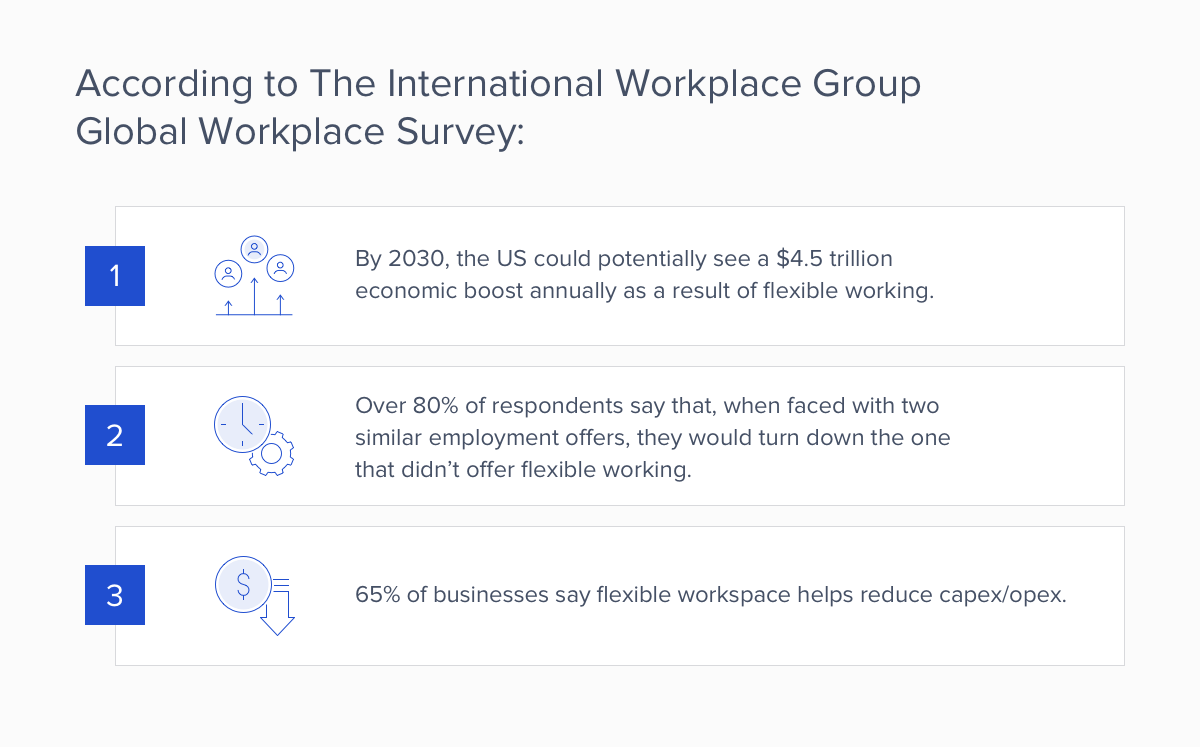
When looking for talent, companies are most concerned with finding people with the right skills. According to Toptal’s 2019 State of the Remote Workforce Report, 77.5% of companies say finding the right talent continues to be a top challenge. Of those, 27% say finding the right talent is the most critical challenge the company faces today.
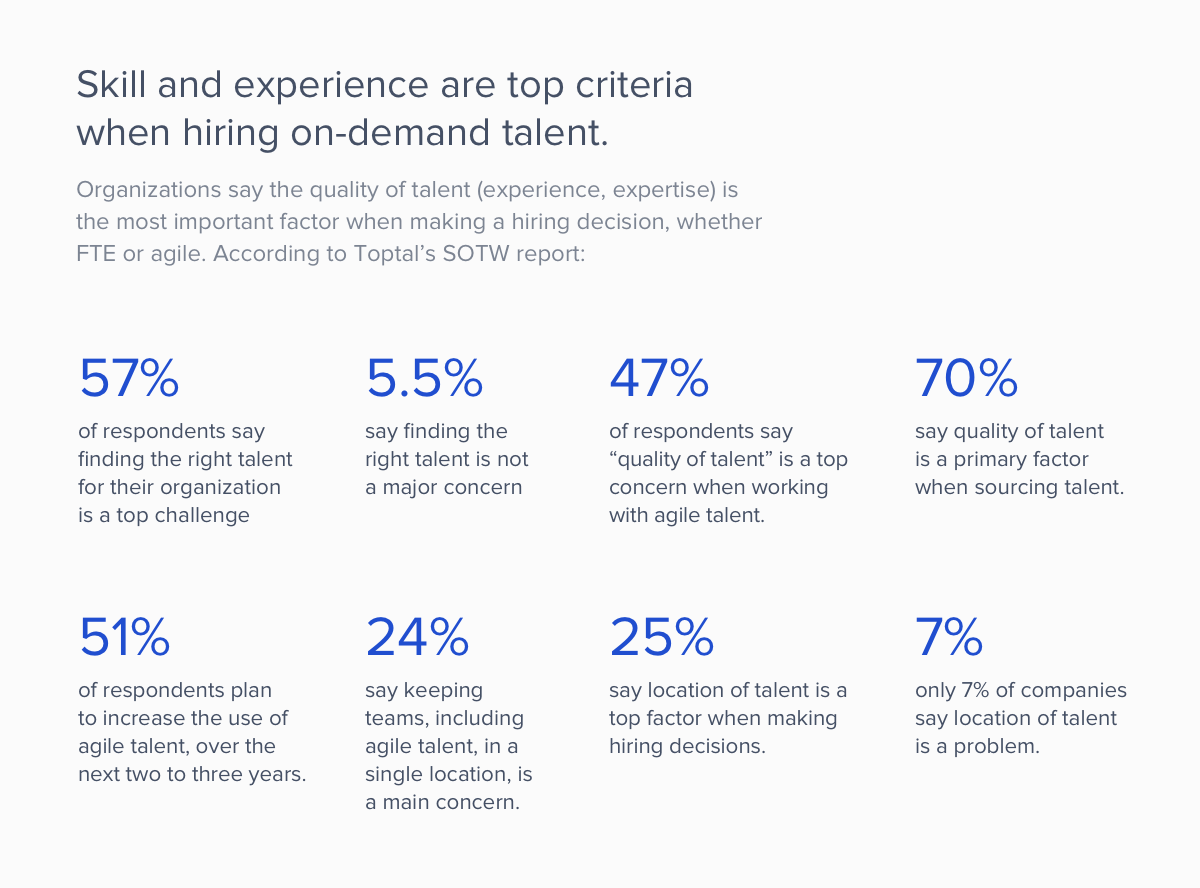
It’s not that they’re not looking. Overall, companies are satisfied with their hiring processes (60%). They’re also considering talent models outside of full-time staff. According to the report, 67% of respondents say at least one-fourth of their talent is contingent. More than half of these companies (51%) expect to increase their use of contingent talent in the next several years.
Today’s companies value skilled talent above all else. Organizations have high expectations when hiring people, with 70% of respondents citing “quality of talent” as a top priority. When it comes to how companies measure their on-demand talent, only 25% of respondents cited “location of talent” as a top factor in their decision. “Corporate customers care about quality,” says David Francis, the director of research at Talent Tech Labs.
For companies that buy contingent labor, hands down the most important factor to them is the quality of the talent that ends up getting into their organization.
If companies are struggling to find people with the right skills, the sheer size of the global talent pool should indicate that methods may be to blame. For example, many companies are still engaging in outdated talent models including a top-down, rules-based approach rather than on-demand.
According to Toptal’s Report, the same companies that say they prioritize skills and experience are still, paradoxically, using talent models based on physical location. More than 45% of companies have less than one-quarter of their contingent talent remote-based, and less than 5% have three-quarters of their entire workforce working remotely.
Businesses are talking the talk in searching for and hiring only the best talent. But when it comes to walking the walk, they’re not leaving their own neighborhood.
The Walk: In Reality, Location of Talent is a Deciding Factor
Communication and collaboration tools like Slack, Trello, Zoom, and Microsoft Teams (which launched its Microsoft 365 freelance toolkit last December) make remote work possible and effective. Companies have engaged in versions of remote work—within certain fields like sales and consulting—for decades. But according to Toptal’s report, when it comes to freelance talent joining existing teams or creating new teams, managers still prefer local.
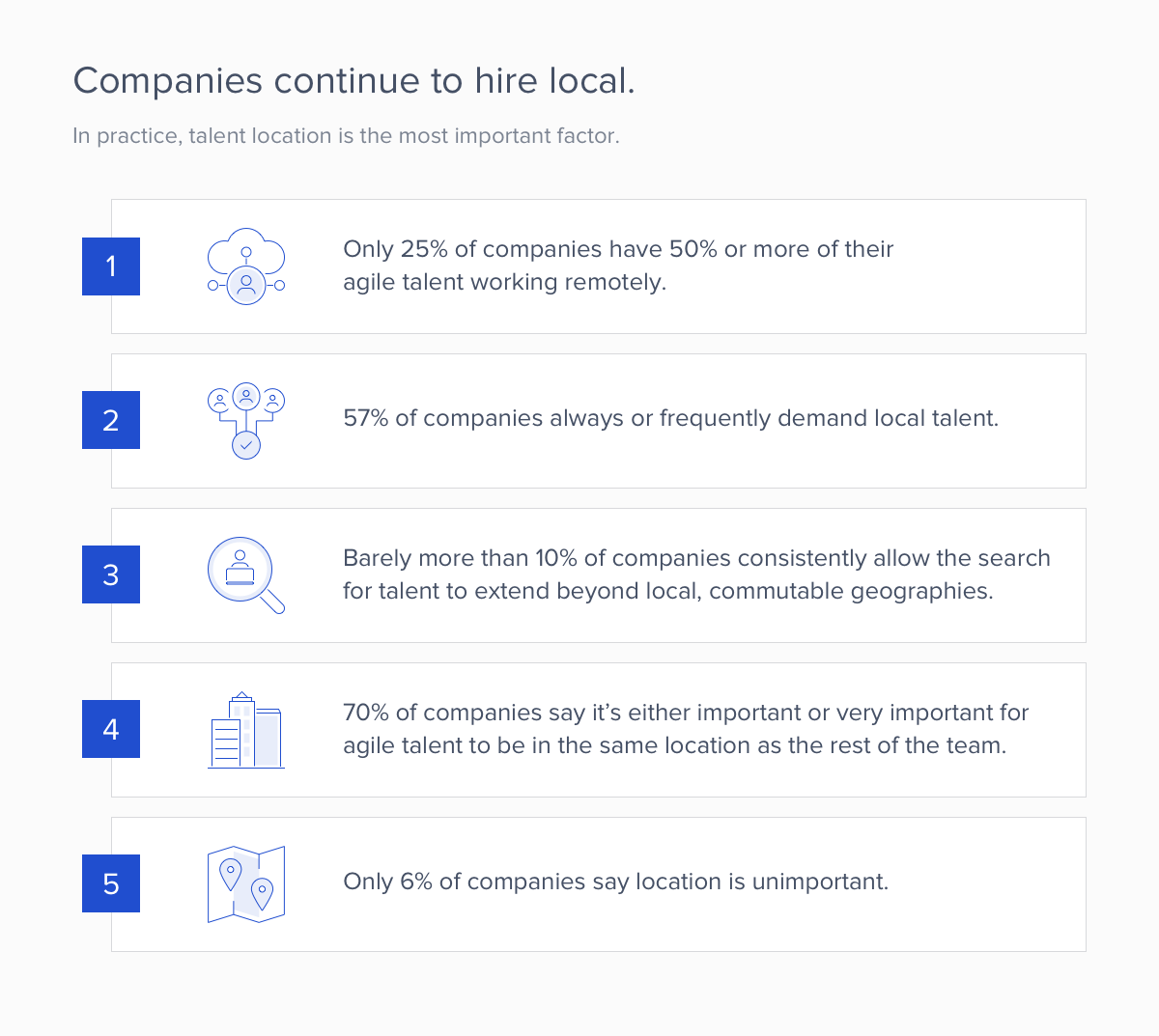
Study after study cites companies touting the benefits of remote work. Many organizations, however, have field-tested remote programs only to recall remote workers to the office (famously Yahoo, IBM, and Hewlett-Packard). Amazon is investing $5 billion over the next 15 years in a second brick and mortar headquarters to ensure East Coast talent have an office.
Apple’s new headquarters, nicknamed “the spaceship,” will house 13,000 employees, be wider than the Pentagon, and cost $5 billion (an estimated $1,785 per square foot). Google and Microsoft are both investing billions building new state-of-the-art headquarters, creating more than 6 million square feet of new space between them.
Going to remote work is butting against 200 years of the way business was done,” says Francis. “It's a totally new management model.
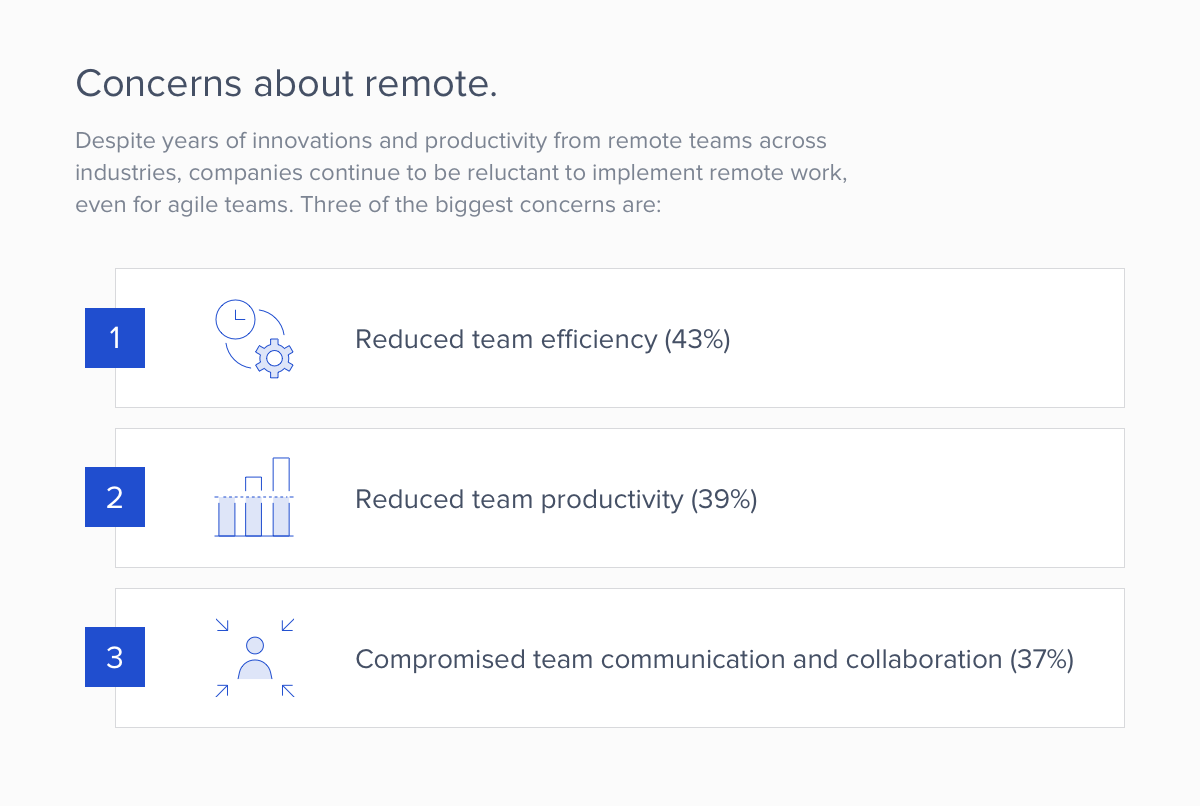
Rethinking Process
Remote work is not just about the place. When the electric motor replaced the steam engine in the early 20th century, the early adopters eagerly swapped out their steam engines for this hot new technology. However, they only saw minimal incremental value. It wasn't until Henry Ford realized the technology allowed him to rethink the process that the magic happened. The assembly line and the factory suddenly created exponential value—and exponential wealth—in the marketplace.
Similarly, today’s technology allows companies to rethink the way they distribute activity, and thus work, says John Healy, Vice President and Managing Director of the Office of the Future of Work at Kelly Services. “I think in many cases, we're still just replacing the steam engine,” says Healy. He thinks many companies are simply layering gadgets and AI on top of existing processes, thinking that will dramatically shift the way the work gets done. Instead, he stresses, the talent evolution should be about asking how we can change the way we work to create value. “We need to pause and say, ‘Wait a minute, I can look at this differently.’ We have to be willing to think bigger.”
That first step is, like Henry Ford suggested, redesigning process. “If your workforce planning only accounts for your full-time employees, you’ve got a problem. You need to change that macro. Look at it in a more holistic lens,” says Healy.
Specifically:
- Considering the magnitude of change that effectively operating a remote program entails.
- Reevaluating processes for hiring remote talent, including the partners who help source global talent.
- Revising processes for managing remote teams.
Change involves risk. But so does maintaining the status quo. Ultimately, the company-talent equation is being rebalanced, and we have yet to see where it lands. The danger for companies that are hesitant to fully embrace remote talent—either full-time or freelance—comes when the supply of skilled workers dips below demand. It’s already happened, and now the talent get to define how they want to work.
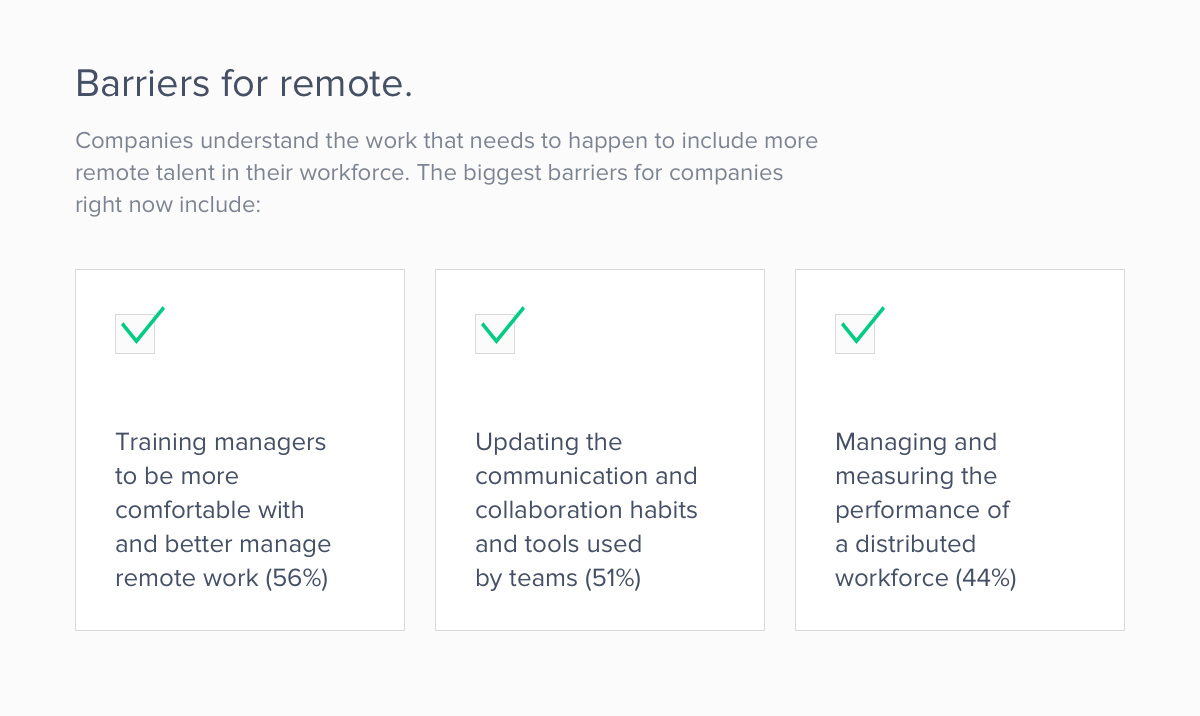
Many countries are already mandating remote work options for employees, though they’re not always exercised. According to The International Workplace Group’s 2019 Workplace Study:
- Norway’s Working Environment Act offers the right to flexible working hours.
- Australia’s Fair Work Act enables negotiating working conditions that suit both employer and employee.
- The United Kingdom allows all employees who have worked for the same employer for at least 26 weeks to apply for flexible working.
- Italy protects the equality of remote workers, as long as they’re doing the same work.
- Belgium’s Workable and Flexible Work Act regulates remote work.
“My prediction is that the future is, increasingly, distributed teams,” says Francis. It will be an exercise in learning, however. “Companies that resist remote programs will have a tougher time hiring that highest-quality talent they’re looking for,” he says. “The ship has already started to sail. Companies that don’t offer remote work options are basically excluding themselves from an increasingly large number of people that prefer to work that way. I think candidates are going to evaluate employers on that, even if they're in the same town. If a company isn’t flexible, that's going to indicate to a candidate that this might not be the kind of company that he or she even wants to go work for in the first place.”
These companies also risk losing existing talent that’s looking for more flexibility. “It's not just the youth movement driving this change,” notes Healy. “It's also that 50- to 70-year-old who's saying, ‘I'm going to go do what's right for me and my family right now.’ All of those norms are changing.”
Despite its challenges, remote work has enormous implications for the future. “I don't ever hear people talking about their incumbent supply chain with this level of passion,” says Francis. “But when you talk to people who are architecting this new freelancer platform or a new remote work platform, people are crazy passionate about it. They turn into evangelists.”
Both large organizations and skilled talent will continue to drive the remote workforce. As the nature of work continues to evolve, companies will continue to redefine what excellent collaboration and innovation looks like. Ultimately, accessing the global talent pool remotely will shepherd global companies towards massive opportunities for digital transformation.
